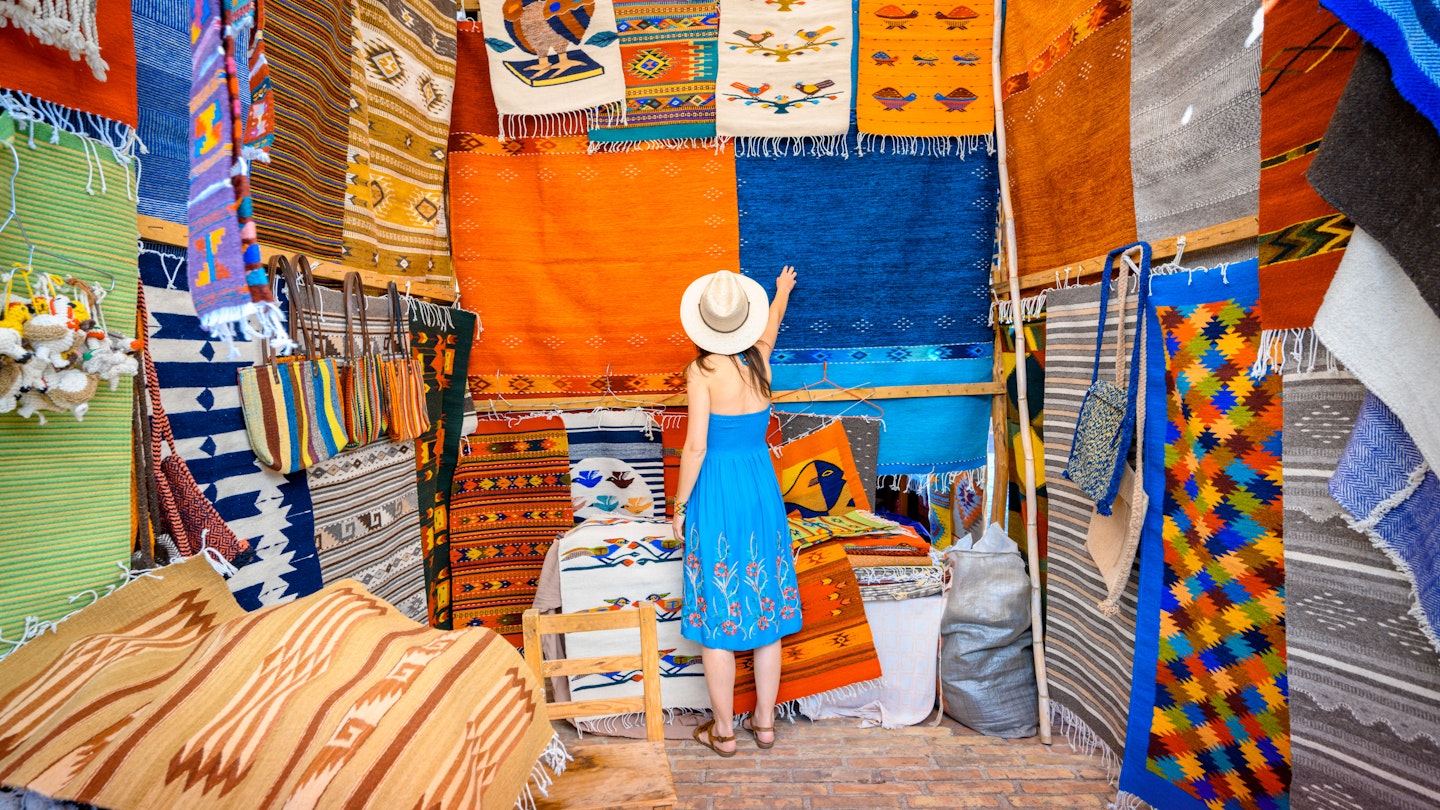As Oaxaca’s superb colonial capital continues to grow in popularity, it’s not just the rich culinary scene and myriad cultural attractions that have so many travelers singing its praises. It’s also incredibly budget-friendly.
What makes it so easy on the wallet? For starters, the affordable accommodations, dirt-cheap transportation, and plentiful free sights add up to big savings. Moreover, when it comes to the famously savory regional cuisine, let’s just say some of the city’s best eats await in the humble market and street stalls.
To get to Oaxaca on the cheap, take the bus
Most international flights arrive in Mexico City, where you can catch a bus to Oaxaca. Buses depart frequently from the TAPO station, conveniently located just 3 miles west of the Mexico City airport, and they’re usually the most inexpensive option, especially aboard an economy-class line. The ticketing website ClickBus often offers discounted online fares.
For cut-rate Mexico City-Oaxaca flights, look for off-season deals on low-cost airlines Volaris and VivaAerobus.

Eat like a king for less
Oaxaca’s vibrant old markets serve everything from modest three-course comida corrida meals and delectable mole dishes to fresh-baked pan dulce (sweet bread) and smoky grilled meats accompanied with fixings for tacos. The mercado experience is all about savoring down-home cooking, and it comes at a ridiculously cheap price – what’s not to like?
You’ll also come across an abundance of classic street-food eats, such as gigantic tlayudas (grilled tortillas filled with beans, cheese, and optional meats), Oaxaca-style tamales, and a tantalizing array of corn-based snacks – all tasty treats sure to please the palate and the pocketbook.
Pile into a shared taxi to visit scenic towns nearby
To reach Oaxaca’s surrounding towns and outlying craft villages, maroon-and-white colectivoss (shared taxis) charge only a fraction of what it would cost to get there in a regular cab. Granted, you’ll have to squeeze into a sedan with at least three other passengers, but they’re often a quicker and cheaper option than taking a second-class bus.
Colectivos run along fixed routes, and their destinations are displayed on their windshields. If you’re heading out to the towns of El Tule, Teotitlán del Valle, or Mitla, you’ll find the vehicles one block east of the Vasconcelos baseball stadium, along Hwy 190.
Discover urban art along cobbled streets
Local artists have transformed the streets of Oaxaca into an outdoor gallery of sorts, with brilliantly painted murals adorning the walls in the historic centers of Jalatlaco, Xochimilco, and the Centro. All three neighborhoods are within walking distance of one another, allowing you to easily explore them on foot.
Know when to score good-value digs
Tourism typically slows down in May, June, and most of September, with the exception of September 15 and 16, when Mexico celebrates Independence Day. These are good months to shop around for bargains in Oaxaca’s no-frills hotels and charismatic inns. Room rates spike during busy festivals, but Oaxaca generally has reasonably priced lodging throughout most of the year.
Hop on a city bus for the most inexpensive tour in town
You have to love a city where you can get to pretty much any neighborhood for a mere M$8 (US$.40). A new rapid-transit system called CityBus has been expanding its routes to make Oaxaca’s public transportation more efficient. If you’re arriving at the first-class bus station, “Juárez” buses will take you three blocks east of the Zócalo, the city’s main square.
Browse first-rate arts and crafts stores
Oaxaca’s thriving arts scene is unmatched in Mexico, overflowing with galleries and shops displaying high-quality works. You should check out the impressive alebrijes (colorful wooden animal sculptures), hand-woven Zapotec rugs, polished black ceramics, and exceptional paintings by revered Oaxacan artists.

Delight in live entertainment on the Zócalo
For good old-fashioned Mexican fun, don’t miss out on the playful street artists, marimba, brass-band ensembles, and traditional dancers performing on Oaxaca’s shady main square. The atmosphere really comes to life on weekends when street performers engage the large crowds.
Enjoy free museums, baroque churches, and more
With a whopping 1200 historic monuments, the easily walkable Centro has earned its Unesco World Heritage badge. Along downtown’s cobbled streets, you can visit a range of noteworthy sights, including an iconic 18th-century aqueduct and exquisite baroque churches.
Get up close and personal with skillful artisans
In several of Oaxaca’s nearby craft villages, gifted artisans provide free tours of their facilities, sharing secrets of the trade with curious onlookers. In the barro negro (black pottery) hub of San Bartolo Coyotepec and in the ancient weaving village of Teotitlán del Valle, community-run museums charge nominal entry fees for their interesting folk-art exhibits.
Take a shuttle van from the airport to stretch your dinero
If you’re flying into Oaxaca’s airport, shared shuttle services to the city center cost M$105 (US$5.20) – about half what you’d pay for a private taxi. With savings like that, you might treat yourself to an extra round of tacos and mezcal!
Daily costs in Oaxaca
- Hostel dorm room: M$300-500 (US$15-25)
- Basic room for two in high season: M$800-1000 (US$40-50)
- Self-catering apartment: from M$500 (US$25)
- Public transportation fare: city bus service M$8 (US$.40)
- Dinner for two: M$500-800 (US$25-40)
- Market fare: M$40-80 (US$2-4)
- Tlayudas: from M$60 (US$3)
- Tacos & tamales: M$15 (US$.75)
- Mezcal: from M$50 (US$2.50)
- Coffee: M$25-40 (US$1.25-4)





